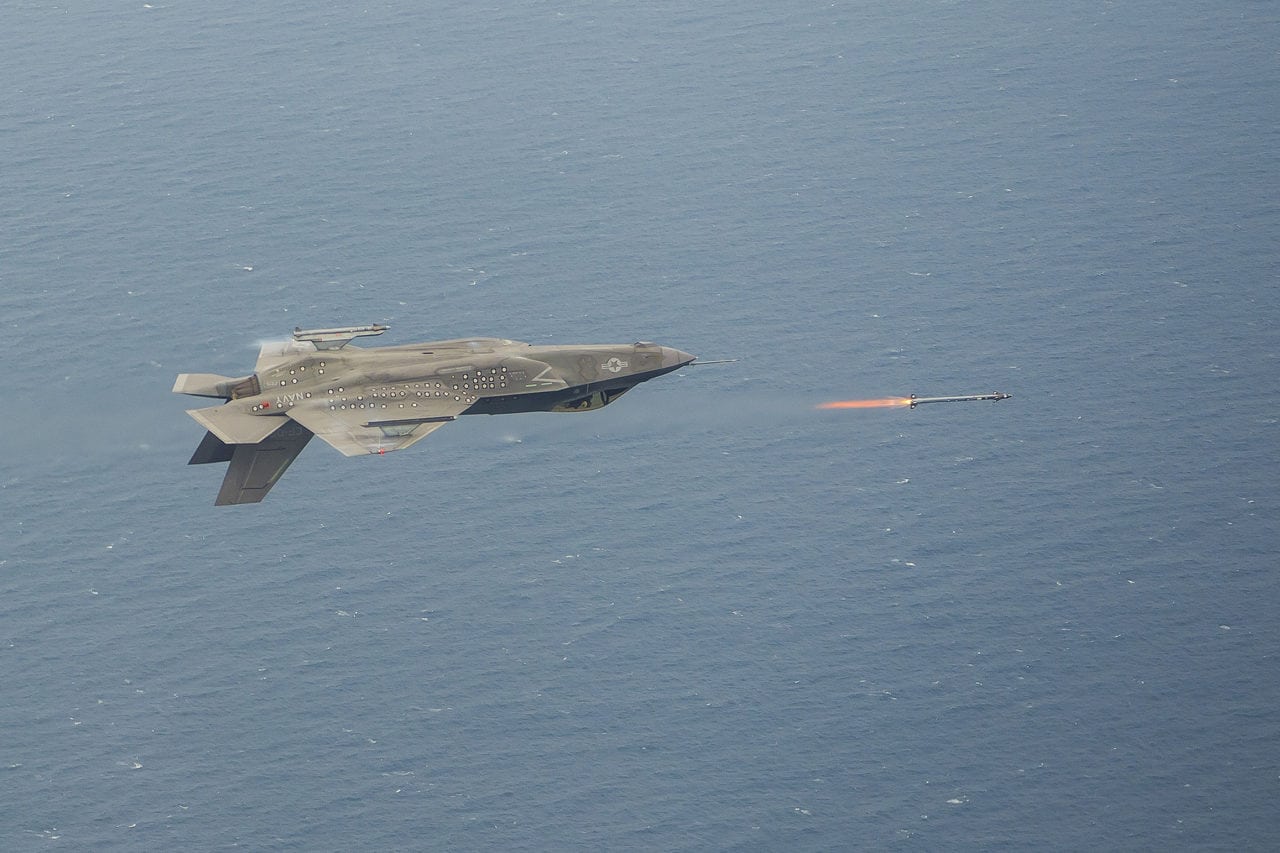
An F-35C firing missiles upside down (Lockheed Martin)
The U.S. Defense Department plans to spend about $6.6 billion on continuous capability development and delivery (C2D2) for the F-35 Joint Strike Fighter from 2019 through 2024, according to its just-released fiscal year 2020 budget proposal.
Lockheed Martin’s F-35 has been in low-rate initial production through its first 12 lots, but the company plans to enter full-rate production this year, jumping to 130 deliveries, up from 91 deliveries in 2018 across all three variants — conventional takeoff F-35A, vertical-takeoff-and-landing F-35B and carrier-based F-35C. In total, there have been more than 355 F-35 deliveries through 2018. No money has been spent on C2D2 yet, though some research programs that were previously under different headings will be moved to that heading. DOD has about $462 million in Navy money earmarked for C2D2 in 2019 and wants to quickly increase that number beginning in 2020 as the fighter program ramps up to 2020.
The proposed budget calls for about $1.5 billion each in 2020 and 2021, and then between $950 million and $1.1 billion in each of the following three years. Of that, about $3 billion will come from the Air Force and $3.1 billion will come from the Navy and Marine Corps. In addition to the funding supplied by the U.S., international partners will also contribute. The total proposed funding for fiscal 2020 F-35 C2D2 from all sources is about $1.8 billion, $1.5 billion of which is being contributed by the United States.
DoD has long said that C2D2 would be an important part of the F-35 program to keep it relevant and cutting-edge in the modern world. The idea is to think of the jet like a computer that needs constant software updates and new capabilities to remain useful. One eventual technology proposed by Lockheed’s former F-35 chief and current Skunk Works head Jeff Babione is a level of augmented reality that allows pilots to see through the plane no matter which direction they look, a limited version of which is already enabled by the jet’s sensors and helmet-mounted display system.
In the immediate future, the development will be working toward the fifth-generation fighter’s Block 4 technology refresh, which will begin this year. A major focus of Block 4 will be compatibility with additional weapons, such as the new version of Raytheon’s AIM-9X Sidewinder missile and the B61 Mod 12 nuclear bomb. There will also be software updates, to a number of ends: to accommodate those new weapons and pilot control of them; to integrate new sensors and communications and electronic warfare capabilities to help leverage the F-35’s powerful data fusion for the rest of the squadron and fleet; and simply to fix bugs that, according to Joint Program Office chief Vice Admiral Mat Winter, persist from the substandard earlier versions of the system.
Work was done in fiscal 2017 and 2018 to mitigate risk and prepare the fleet for Block 4 integration, according to the budget proposal, which will begin this year and scale up in 2020, with the goal of delivering “full air system Block 4 capabilities to support initial fleet availability of Block 4 upgrades” in fiscal 2021.